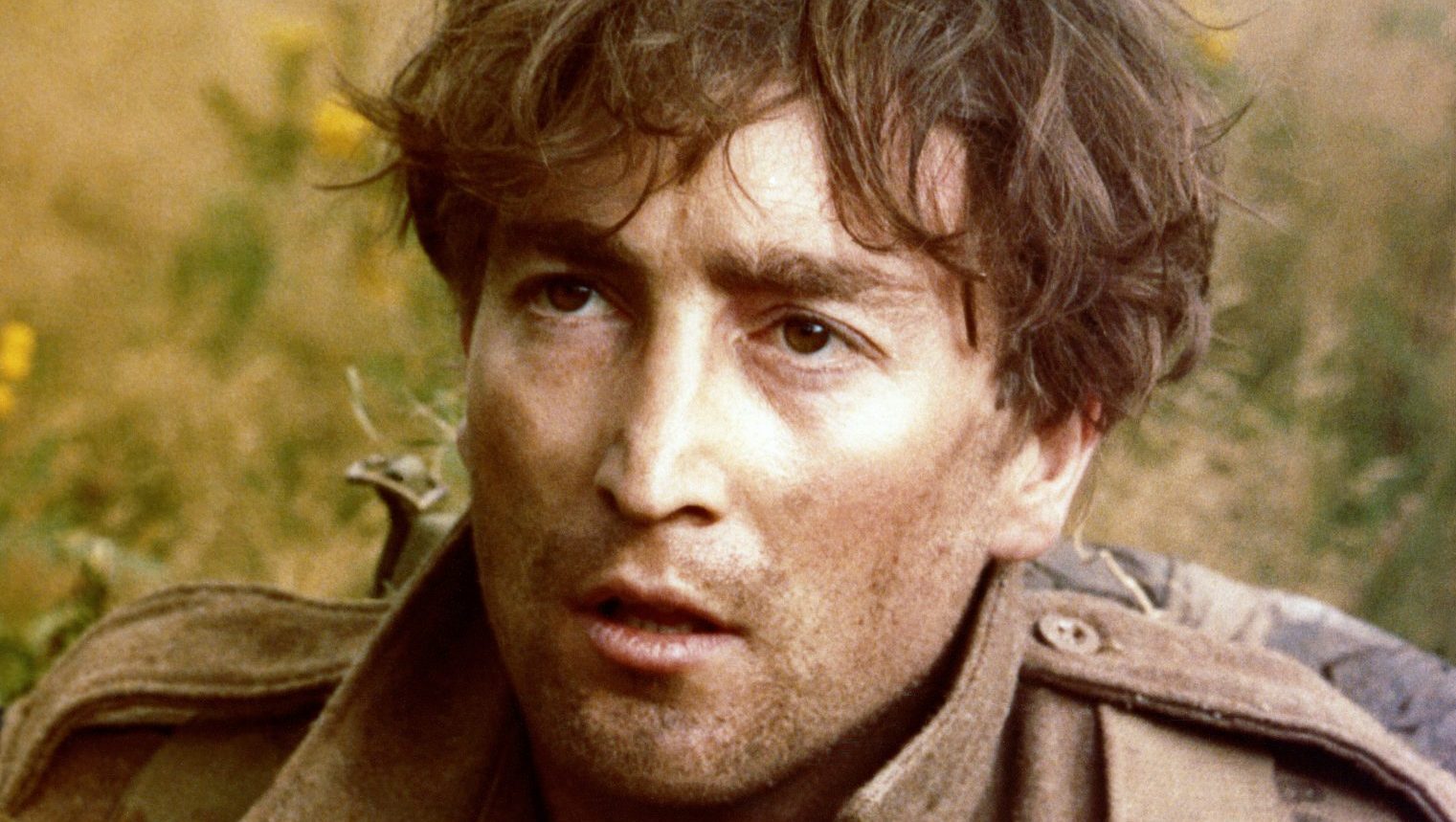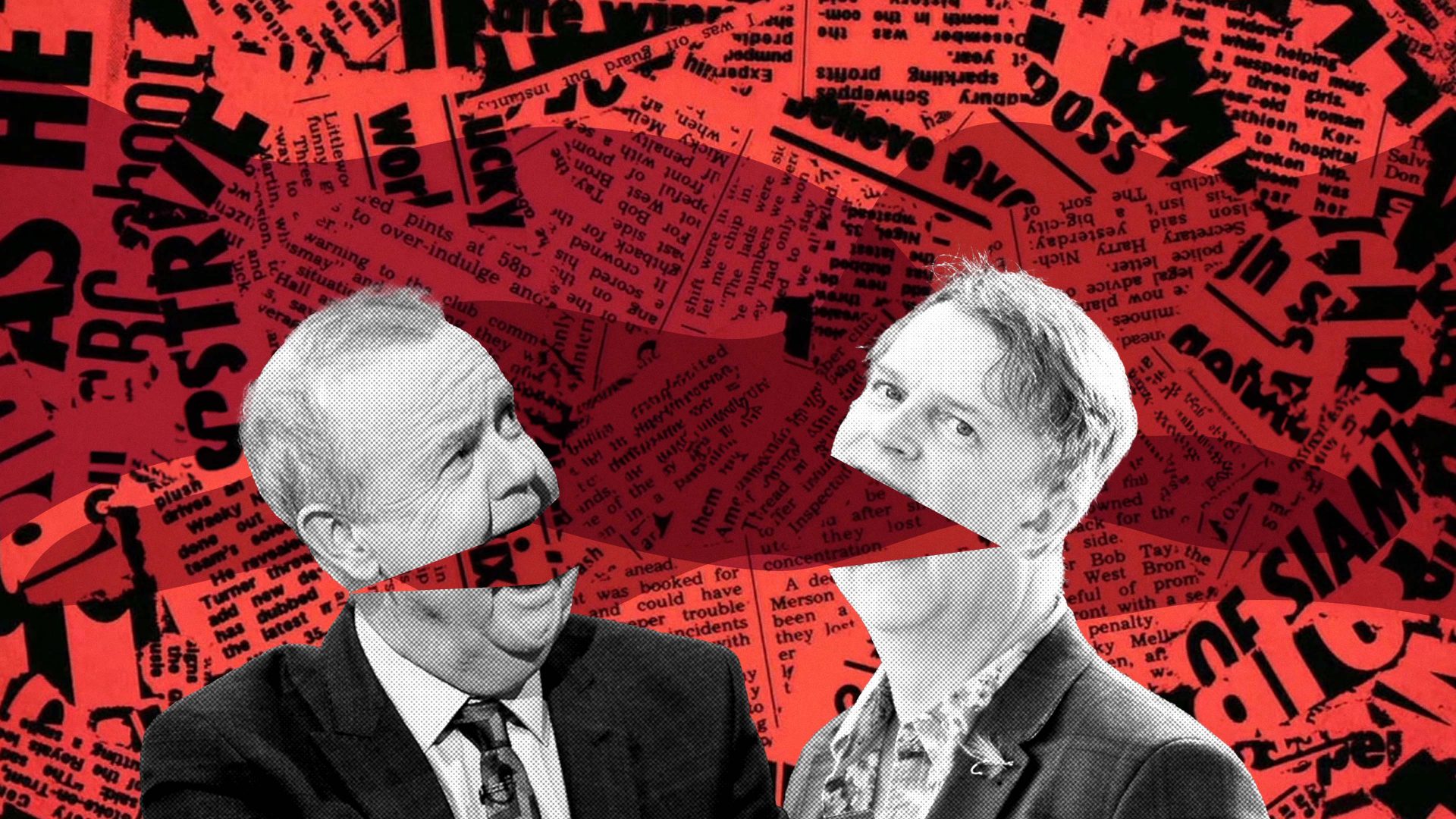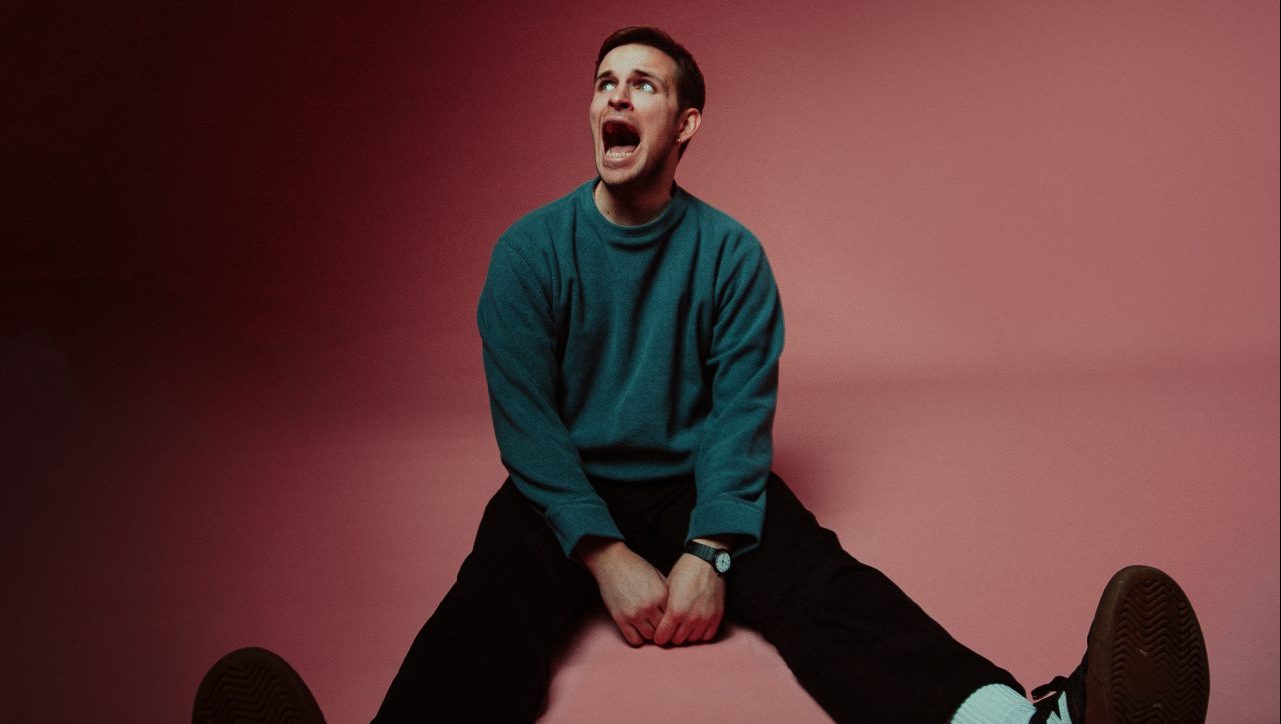It’s autumn 1966 under the hot desert sun near Almería in Andalucía. John Lennon is grappling with his identity following the Beatles’ decision to quit touring, after a tumultuous summer when they were targeted with death threats in the US and endured terror of a different kind at the hands of the Marcos regime in the Philippines.
Needing time to think about what life meant for a musician who didn’t play live, Lennon had accepted an offer from the American director Richard Lester, who had helmed the Beatles’ first two movies. Taking on his only non-musical film role, Lennon was starring as Musketeer Gripweed in absurdist dark comedy How I Won the War, losing his famous mop-top haircut and wearing his iconic NHS style “granny glasses” for the first time.
After initial filming in Saxony, production moved to a remote part of southern Spain for a seven-week shoot, where Lennon rented a villa with co-star Michael Crawford. Some believe the villa’s wrought-iron gates and lush gardens may have reminded him of Liverpool’s Strawberry Field, the Salvation Army home where he played as a child, somewhere he went in search of escape.
Whatever the inspiration, over those weeks in Almería Lennon worked tirelessly on arguably his greatest, and most personal, Beatles composition, Strawberry Fields Forever. Such lyrical self-expression would form a key part of his writing for the rest of his life.
The film also appealed to Lennon’s growing anti-war sentiments, something that would later find expression in his iconic peace campaigns.
The path to this pivotal crossroads began earlier in 1966 when the US teen mag Date Book seized on a London Evening Standard interview with Lennon by his friend Maureen Cleave, a journalist. Taken out of context across the Bible Belt where it was inaccurately framed as a boast that the band were “bigger than Jesus”, the controversy prompted record burnings and demonstrations by the Ku Klux Klan. When a firecracker went off at a show in Memphis, the other three Beatles looked round at Lennon, thinking he had been shot.
Lennon and George Harrison had already grown tired of touring. And unable to do justice to their new album, Revolver – a sonic breakthrough with backward guitars, tape loops and Indian instrumentation – even ultimate showman Paul McCartney was convinced that future touring was unsustainable. “It was just a sort of a freak show,” said Lennon in 1969. “The Beatles were the show and the music had nothing to do with it.”
Wanting to “avoid the depression” caused by such a dramatic shift in the Beatles’ career, Lennon leapt into filming How I Won the War. In one of his final interviews in 1980, captured in The Beatles Anthology, he revealed that the interminably long filming days in Spain had allowed him rare time off to reflect not just on life after touring, but after the Beatles, too.
“I was always waiting for a reason to get out of the Beatles from the day I made How I Won the War,” he said. “I just didn’t have the guts to do it, you see. Because I didn’t know where to go.
“I made the movie because the Beatles had stopped touring, and I didn’t know what to do. Instead of going home and being with the family, I immediately went to Spain with Dick Lester because I couldn’t deal with not being continually on stage. That was the first time I thought, ‘My God, what do you do if this isn’t going on? What is there? There’s no life without it.’ That’s when the seed was planted that I had to somehow get out of this, without being thrown out by the others.
“But I could never step out of the palace because it was too frightening. I was really too scared to walk away. I was thinking, ‘well this is the end, really. There’s no more touring. That means there’s going to be a blank space in the future.’”
Lester’s movie is very loosely adapted from the 1963 novel of the same name. It tells the story of hapless, deluded British commander Lieutenant Goodbody, played by Crawford, who enthusiastically leads his 4th Musketeer Regiment on a series of debacles on the battlefields of the second world war, including the calamitous installation of an “advanced area cricket pitch” behind enemy lines in north Africa. The action, told through a series of flashbacks, follows Goodbody’s men from Tunisia in 1942 to occupied Europe in 1945.
Described by the British Film Institute as a biting satire not just on the futility of war, but also the very concept of the war movie, Lester’s film is a surreal farce, subverting the usual heroic stereotypes of the time and generating some protests for doing so on its release in October 1967. Yet for Lester’s stylised direction, its innovative style, time jumps and fourth-wall breaking, it has never grown beyond cult status, its import amplified by a Beatle’s involvement. It also contains some occasional, but horribly outdated racial stereotypes and one character’s use of blackface.
A novel conceit was to portray characters killed in action as toy soldiers, returning to the troop with their uniforms and faces coloured red, blue or green – including Beatles assistant Neil Aspinall. At times the surrealism is intercut with real, harrowing wartime newsreel footage, also tinted with bright colours. It’s a jarring juxtaposition.
Lennon’s was a supporting role, described by Aspinall as Goodbody’s “faithful, slovenly and slightly cowardly servant/batman”. A character who supported Oswald Mosley’s National Socialists as the film hints briefly at fascism among the British side.
While much of his performance as a wisecracking, cheeky scouser would have been instantly familiar to fans from scenes in Lester’s Beatles movies A Hard Day’s Night and Help!, it does suggest some burgeoning acting talent.
Lennon and Aspinall had flown to Hanover just one week after the Beatles’ last-ever gig at Candlestick Park in San Francisco. The following day, at a small hotel in the forest of Lüneburg Heath, Lennon underwent a haircut to transform him into Gripweed, which made headlines around the world.
Locations used in Lower Saxony included Shiel Barracks in Verden, which doubled for Catterick Garrison and the surrounding countryside for the film’s climactic skirmishes. Lennon’s battlefield death scene seems unbearably poignant and prescient in hindsight. “I knew this would happen,” says Gripweed looking straight into the camera. “You knew it would happen, didn’t you?”
After filming wrapped in Germany, Lennon and Aspinall revisited old haunts from the Beatles’ pre-fame days in Hamburg, before travelling by train to Paris, where they met up with McCartney and Beatles manager Brian Epstein for a short break. Harrison, meanwhile, was away on a transformative journey of his own, studying the sitar in India.
Lennon then headed south, flying first to Málaga before a gruelling five-hour drive to Almería, along what Aspinall recalled in an exclusive dispatch for US magazine 16, as “dirt tracks with superficial tarmac coating”.
“For most of the way, the ‘road’ runs alongside the sea,” he wrote in 16. “I reckoned we would plunge straight down into the waves at any second.”
If underdeveloped in the years before mass tourism, southern Spain was already a hugely popular spot for movie making; the Tabernas Desert doubling for north Africa and the Arabian deserts in films such as Lawrence of Arabia, while also standing in for the American south-west and northern Mexico in a score of Spaghetti westerns like The Good, the Bad and the Ugly – and later Ringo Starr’s 1971 movie Blindman.
Lester had filmed there just the previous year, also with Crawford, on A Funny Thing Happened on the Way to the Forum and would later return to shoot his Three Musketeers trilogy. For scenes depicting Tunisia, Dieppe and Dunkirk, he also made use of local ports and the beach at Carboneras.
Shooting days were long in a bleak, dusty environment that sorely tested Lennon’s patience, even if he enjoyed the actual acting. Rising early before a two-hour drive to set, the regime was a shock for a musician used to sleeping in, playing gigs at night and recording well into the early hours.
On-set facilities were basic, but Aspinall reported they were well looked after. On location, when not shooting, they sat around on the floor of an old bus with no seats that served as company wardrobe and dressing room. Lunch of melon, fillet steak and fruit was served in a big and very hot tent.
At first, Lennon, his wife, Cynthia, and Aspinall stayed in a small but comfortable seafront flat in an apartment block called Delfín Verde (Green Dolphin) at El Zapillo beach in Almería. With few local amenities, they had to make their own entertainment, frequenting the nearby restaurant, Manzanilla, for dinner, where Lennon invited the entire crew for an early celebration of his 26th birthday.
Evenings though were mostly spent quietly, playing board games or learning lines for the following day. To amuse themselves, Lennon and Aspinall would rewrite whole scenes, even if this ultimately grew confusing. Lennon also took time to give Gripweed his own Liverpool origin story.
At some point, the scouse reverie was interrupted by Juan Carrón Gañàn, a teacher whose methods included transcribing Beatles lyrics to help teach his students English. He was finding material on Revolver more challenging to get right and on learning that Lennon was filming in Spain, embarked on a road trip to Almería to seek the songwriter’s help directly.
He somehow managed to gain access to one of the most famous people in the world; Lennon was charmed by the idea and spent time working through the scribbled lyrics, making corrections and filling in gaps.
On his actual birthday, October 9, the Lennons moved into the more spacious mid-19th-century villa Casa de Santa Isabel (known locally as Cortijo Romero) with the Crawfords, Aspinall and the newly arrived Ringo Starr and his wife, Maureen. Lennon was instantly delighted with his temporary home, a former convent with its own pool, described by Aspinall as “a magnificent rambling old Spanish villa standing on a hill outside the town”.
“It’ll take days just to explore this place,” Lennon declared, admiring the heavy woodwork, decorated ceilings and majestic main hall, while Starr checked out the games room and called on the others to try their hands at table tennis.
That night’s “villa warming party” had to be conducted by candlelight after one of the worst storms to hit Almería in living memory knocked out electricity and phone lines and delaying filming. In her book John, Cynthia recalled the Santa Isabel guests had discovered that the villa was haunted, with lights going off, objects moving mysteriously and the sense of a strange presence.
“As the thunder and lightning raged outside [during the storm], we lit dozens of candles in the huge main room,” she wrote. “In the flickering candlelight the atmosphere softened, and someone began to sing. Everyone joined in and the most beautiful, melodious sound filled the air. It was as though we were totally in harmony, musically and spiritually. It was easy to believe we had been guided in our song by the spirits of the nuns who had once lived there”.
Lennon had already been taking delight in startling locals through the mounted loudspeaker on his Rolls-Royce with blacked-out windows, which he’d had brought over from England.
Said Aspinall in Anthology: “There had been a big storm one night. Everything had been washed out to sea, and all the roads were really muddy. Then they had all become rutted when it dried. We were coming back from location in John’s black Rolls Royce and we had Dylan on the car stereo, but switched it over to the tannoy so the song played outside.
“We were going down the road with Dylan blaring out all over the place. We found out later that everyone called it the ‘Carriage of Death’. For them the car was like a hearse. As we went over a narrow bridge, a motorbike came round the corner, and the rider saw a big black object looming with music coming out of it. There was a gap between a mountain and the little wall over the bridge, and the motorbike went straight through it – the guy just took off!
“Ringo came to Spain. So did another guy, with a box of chocolates full of marijuana. He opened it and said, ‘Brian and I really packed this well for you.’ The contents then erupted and went all over the floor into a thick pile carpet: ‘Oh, thank you!’”
Whether Santa Isabel’s architecture proved inspirational or not, it was here, and on location, that Lennon spent weeks writing Strawberry Fields Forever. The bare bones of the aching melody date back to the Beatles’ first visit to the US in February 1964, but it was in Spain that the song took shape. Photographs capture Lennon sitting on his bed with an acoustic guitar, the lyrics slowly revealing themselves. Echo-laden original composing demos, recorded at Santa Isabel, have since leaked out online offering a unique insight into the song’s painstaking creation.
Stimulated by acid, many songs of the psychedelic era found artists retreating into childhood and nostalgia. And while Strawberry Fields finds an adult Lennon at a critical juncture in his adult life, it also sees him return to a place he felt safe during a troubled childhood.
Remembered Crawford in a contemporary interview [collected in Keith Badman’s The Beatles Off the Record]: “John was a very enigmatic character. There was not a lot revealed, freely. He was writing Strawberry Fields. He sat by himself in his bedroom and worked out melodies on his guitar. I heard him playing the same bar over and over again until he got the right sequence. It was interesting listening to how a song was written.
“He used to sit cross-legged on the beach or on the bed, the two places where one would see him with a guitar, and he would go, ‘Strawberry Fields Forever… well, I’m not sure,’ and I’d say, ‘Oh, it’s great, John. Really, it’s good. I wouldn’t mess with it!’ It just sounded so great, and he’s going, ‘I’m not sure… I’m not sure.’”
Lennon told Rolling Stone in 1968: “I was going through a big scene about songwriting again… and it took me a long time to write it. See, I was writing all bits and bits. I wanted the lyrics to be like conversation. It didn’t work, that one verse was sort of ludicrous really, I just wanted it to be like ‘we’re talking, and I just happen to be singing’. And it was very quiet. But it was written in this big Spanish house, part of it, and then finished on the beach. It was really romantic.”
Expanding on his thought process in interviews collected in Anthology, Lennon says at first he was unsure of his feelings. So, he sings haltingly, the self-doubt evident, “Always, no, sometimes, think it’s me”.
“But now I was sure: ‘Yeah, that was what I’m feeling – it hurts, that’s what it’s about.’ So, then I could express myself… The second line goes, ‘No one I think is in my tree.’ Well, what I was trying to say in that line is, ‘Nobody seems to be as hip as me, therefore I must be crazy or a genius’… Strawberry Fields was psychoanalysis set to music, really.”
Filming wrapped in early November. During his interview with Cleave, Lennon had said there was something else he was going to do with his life, something he must do, only he didn’t know what. It was clear after several weeks in Spain that movie-making was not that something.
He had found the whole experience boring, unfulfilling. Lester could not understand why. “If you really wanted to do this, you could be good at it,” he implored. “But it’s stupid, isn’t it?” came the response. Lennon recalled Lester had far more fun than he had.
Change, though, was just around the corner. One day after his return home he met Yoko Ono for the first time at a preview of her art exhibition at the Indica Gallery. Soon after, the Beatles reconvened in Abbey Road to commence the sessions that would produce Strawberry Fields, McCartney’s similarly nostalgic Penny Lane and what would become the landmark Sgt Pepper’s Lonely Hearts Club Band album. The Beatles were about to emerge as a studio band and change music and culture all over again.



